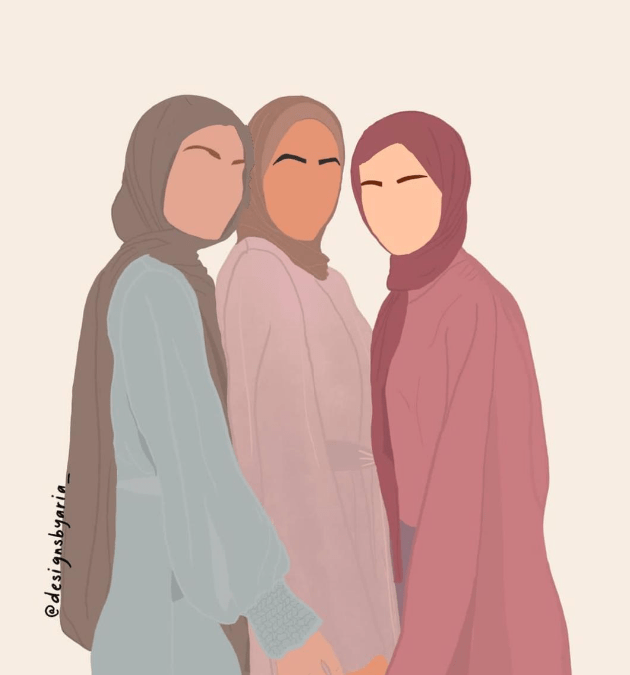By Sara Ghanawi | Staff Writer
World Hijab Day is a global event observed every year on February the first to demonstrate support for Muslim women who face discrimination for wearing the hijab, the modest dress code as per Islamic ruling. On such occasions, many activists around the world showcase their solidarity by raising slogans such as “May women be free to wear what they want” and “Every woman has the right to choose her attire”. Such phrases, although positive and uplifting in nature, tend to strip away from the hijab its core meaning and value.
In recent years, the world has witnessed rising tides of Islamophobia, especially in Western and European countries. Several European governments, particularly that of the French, have taken the lead in their obsession with banning any form of religious display in public in their attempt to protect and promote their “secularism”. Muslim hijabi women, unfortunately, have been the main targets of these discriminatory measures, with escalatory bans on different forms of the hijab in different settings becoming ever more restricting.
For Muslim women, our hijab is very ideologically charged. It is a representation of our belief system, values, ethics, and morals. And while the West is putting in enormous amounts of money and efforts to establish their own secularized liberal systems, a Muslim woman, just by existing in public with her hijab on, is challenging that. She’s presenting—alongside herself—a whole belief system that is anathema to the West. She’s openly purporting an antithetical model to what they have been crafting for years as the “ideal woman”. As such, their vehement opposition and attitude toward Islamic dress is a form of political and ideological posturing and a way of deepening their roots in secularism.
These same governments, however, don’t seem to have any problem with Christian, Jewish, or any other religious expression. So, while it’s obvious that their motive for banning the hijab is anti-Islam hate, activists in the West are trying to paint the discrimination as subsumed under misogyny and sexism. They frame these measures as stemming from a desire to control women’s bodies and what they choose to wear. What’s triggering secular countries, however, is a veiled woman’s Islam and not her gender. Their problem isn’t with the female identity and the expression of a woman’s self through a different type of attire. Their problem is with the Muslim identity and its expression in public. In other words, the main reason for their discriminatory measures is Islamophobia, is their understanding of the meaning of the hijab and their refusal of it, is their fear and disdain of Islam being publicly displayed.
A Muslim woman choosing to wear the hijab in these countries essentially means being publicly antithetical to their liberal values and choosing to adhere to her own beliefs. Attempting to ban the hijab is not an act of controlling what a woman wears, rather it’s an attempt to control what a woman believes. Liberal activists want to say that Muslim women wear the hijab for the same reasons that align with liberal thought. They want to say that it is merely women choosing to wear just any other type of clothing making it a matter of “choice”, “freedoms”, and “autonomy”. This is a very reductionist approach that doesn’t represent Muslim women’s rationale nor their real struggle. This is an attempt to liberalize and secularize the hijab and tear it from its core significance.
You can’t advocate for my right to wear the hijab using the same ideology, framework, and approach that is banning me from it. This advocacy is rooted in liberal philosophy, the same philosophy on which the discriminatory policies were created. This is at best a contradictory and inaccurate addressing of the discriminatory measures, and at worst, a form of performative activism to promote liberal ideals. They refuse to advocate for the hijab as a political and religious symbol because that would go against their ideology and goals. Importantly, activists can’t counter policies that ban the hijab on the premise that women should be allowed to wear what they want, without attending to the entrenched Islamophobia underpinning such legislations, as that would render their activism ineffectual.
Despite that, it’s fair to mention that an advantage of such movements has been their role in shedding light on the experiences and insights of Muslim women about their hijab. In a world where different narratives have dispersed about the “oppressiveness” of the veil and how silenced Muslim women are, it is crucial to hear them express their reasons and stories. And what most of us would agree on is that we take pride in wearing the hijab because it is a public display of our cherished Muslim identity. We don’t want you to take that out of your advocacy on our behalf. You don’t get to choose to define the hijab the way it suits you. While some liberal activists might have good intentions, their approach doesn’t completely address our issue, and rather attempts to unsolicitedly secularize our reasons for wearing the hijab.
Therefore, during this World Hijab Day, let us refrain from framing it as a celebration of “choice”, and rather appreciate and commend the courage of hijabi women for standing firmly rooted in their faith in face of the intensifying oppressive measures to erase the public display of Muslim identity. Let us condemn and call out the recently normalized increasing Islamophobia, which – if not dealt with effectively – would continue to manifest in both racist legislations and casual daily interactions. Let us be brave enough to restore the political dimension of the hijab in our activism, and not skirt around it.
Designs by Aria [@designsbyaria_]. (2021, July 2). Retrieved from https://www.instagram.com/p/CQ1QXCuDCZk/?igsh=MzRlODBiNWFlZA==


Intelligent analysis!
Extremely well thought & well written 👏👏👏 Well done Sara!
Loved itt❤️ thanks for speaking up on behalf of our muslim community!
wow wow very eye-opening and such an amazing take !!